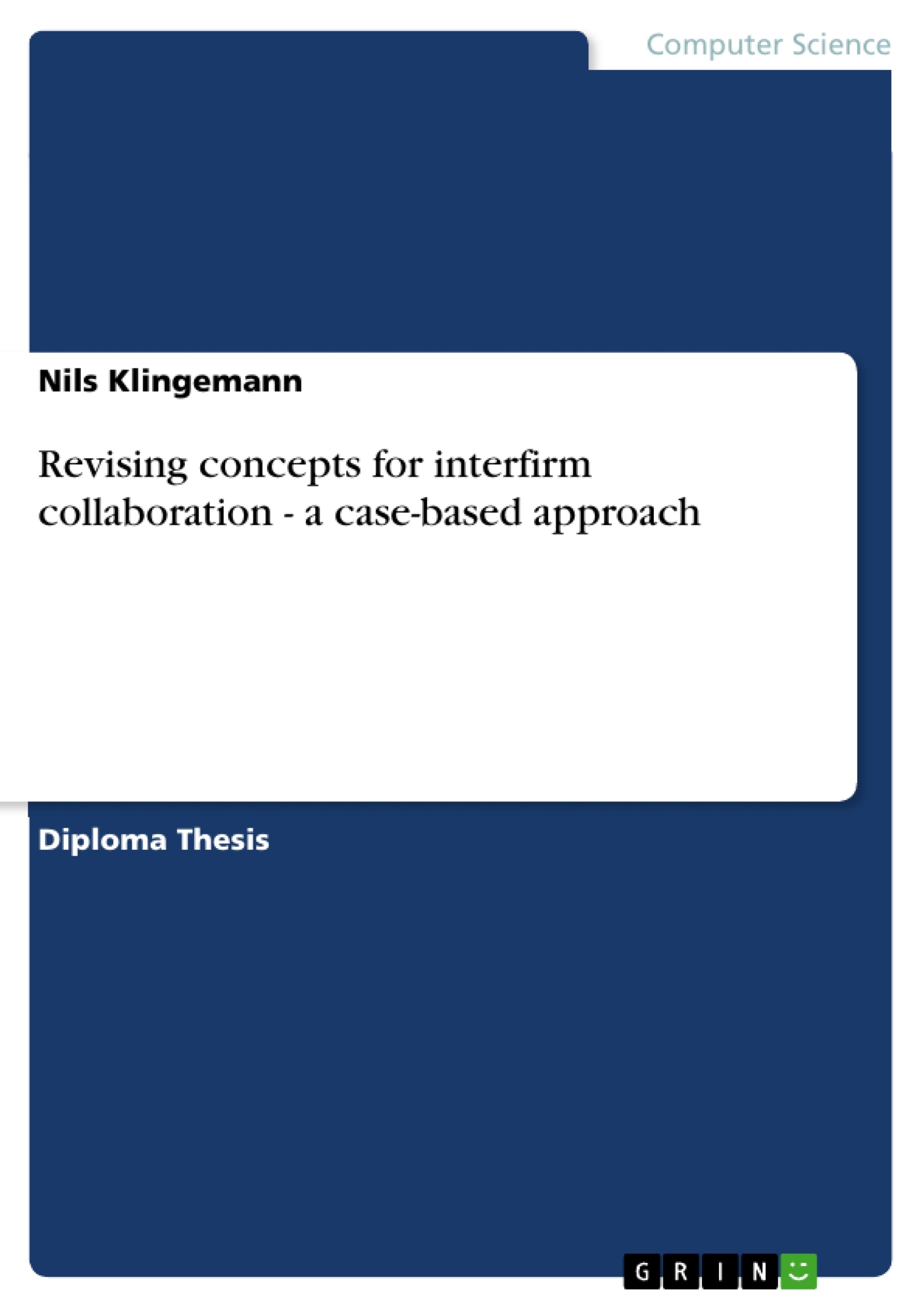The pressure on today’s companies to outperform their competitors has been amplified by ever-growing customer demands. Diversification of products and operations in various markets entail heightened levels of uncertainty and risk in the wake of a pronounced economic downturn. Technical advances and strategic reconsiderations in the Business-to-Business (B2B) market have led companies to meet such challenges with new forms of collaboration. Especially considering its drawbacks, the success of Electronic Data Interchange (EDI) has confirmed the demand for interfirm connectivity. Combined, current forms of collaboration are limited both in scale and scope, as few companies have had the vision and drive to prepare themselves for what is ahead of proprietary one-to-one exchanges.
Since 1999, industrial organizations have separately attempted to enable common interfirm trade with the help of online trading platforms and e-marketplaces. In most industries, the use of these platforms has been reduced to low numbers of intra-industry transactions between first-movers and strategic visionaries. Despite their damped optimism, companies’ readiness has progressed along with the market potential. Tackling the initial weaknesses, an integrative B2B trading network that is based on true interoperability and openness is now well-positioned to exploit this increased potential.
Still, collaboration in its current forms may not be sufficient: considering the present dominance of customer demands, an increasing number of individual solutions must be mass-tailored to order. At first sight, this leaves companies with no choice but to at least neglect, if not give up the goals of synergies, economies of scale as well as critical mass. In reply to this increasingly dynamic and competitive market environment, companies may outsource supporting functions and focus on their core competences. So far however, Western firms have lacked access to the right partners for the required resources, allowing only the outsourcing of selected operations or collaboration on projects of limited. Similar to e-marketplaces, outsourcing has so far not only been restricted in both its strategic and operational scope, but also repeatedly been employed ineffectively or inappropriately. To fully account for the challenges of today’s companies and to leverage their dormant potential, e-marketplaces and outsourcing are to be combined.
Inhaltsverzeichnis (Table of Contents)
- Introduction
- Statement of purpose
- Research focus and goal
- Outline
- The case of Eastman Chemical Company
- Company background
- Overview of corporate e-business portfolio
- Backbone of current IT infrastructure
- Strategic focus in the chemical industry
- Comparison and extension of collaboration forms
- Organizational responses to current challenges
- B2B collaboration models
- Traditional view of collaboration
- Selected non-equity interfirm relations
- Selected equity interfirm relations
- Strategic outsourcing of non-core activities
- From portals and catalogues to e-marketplaces
- Review of collaboration models
- Creating a framework for dynamic collaboration
- Current challenges and unsolved problems
- Meta-market framework requirements
- Ensuring security and privacy
- Adapting and standardizing online laws
- Enhancing trust
- XML-enabled web semantics
- Extending on UDDI as global directory services
- Extending on Web Services for standardized communication
- Feasibility appreciation of a new collaboration model
- Introducing the dynamic collaboration network model
- Operational deployment and integration of a MetaHub
- Initiation and funding
- Connectivity and implementation processes
- Structuring transactions and negotiations
- Extending towards a dynamic collaboration network
- Specialization as key to success
- Implementation
- Market applicability
- Benefits and potential of networked collaboration
- Macroeconomic analysis
- Network theory
- Resulting direct and indirect market effects
- Microeconomic analysis
- Pareto optima in the evolutionary game theory
- Resulting direct and indirect market effects
- Evaluation of the investigation
- Application of the model
- E-business structure of the chemical industry
- ECC's e-business leadership
- Forecasting the impact
Zielsetzung und Themenschwerpunkte (Objectives and Key Themes)
This diploma thesis explores the concept of interfirm collaboration and seeks to revise existing frameworks for dynamic collaboration within the context of business-to-business (B2B) e-commerce. The research uses a case-based approach, focusing on the Eastman Chemical Company (ECC), to examine the application of the proposed model in a real-world setting.
- Developing a dynamic framework for interfirm collaboration
- Analyzing the benefits and potential of networked collaboration
- Examining the role of technology in facilitating collaboration
- Evaluating the application of the model in the chemical industry
- Assessing the impact of the model on ECC's e-business leadership
Zusammenfassung der Kapitel (Chapter Summaries)
The first chapter introduces the thesis's purpose, research focus, and goal. It outlines the case of Eastman Chemical Company and its role in the study. Chapter 2 provides background information about the company, its e-business portfolio, and its strategic focus in the chemical industry. Chapter 3 delves into different forms of collaboration, exploring both traditional and contemporary models, including non-equity and equity interfirm relations, as well as strategic outsourcing and e-marketplaces. Chapter 4 outlines a framework for dynamic collaboration, addressing key challenges such as security, privacy, and trust. It explores the potential of XML-enabled web semantics and Web Services to enhance standardized communication and communication.
Schlüsselwörter (Keywords)
The core themes and concepts of this thesis are centered around interfirm collaboration, B2B e-commerce, dynamic collaboration networks, e-business, and the chemical industry. Key concepts include the MetaHub, Web Services, XML, UDDI, and the application of network theory and game theory to analyze the economic impact of the proposed model. The research also examines the implications of security, privacy, and trust in the context of digital collaboration.
- Arbeit zitieren
- Nils Klingemann (Autor:in), 2003, Revising concepts for interfirm collaboration - a case-based approach, München, GRIN Verlag, https://www.grin.com/document/13467



